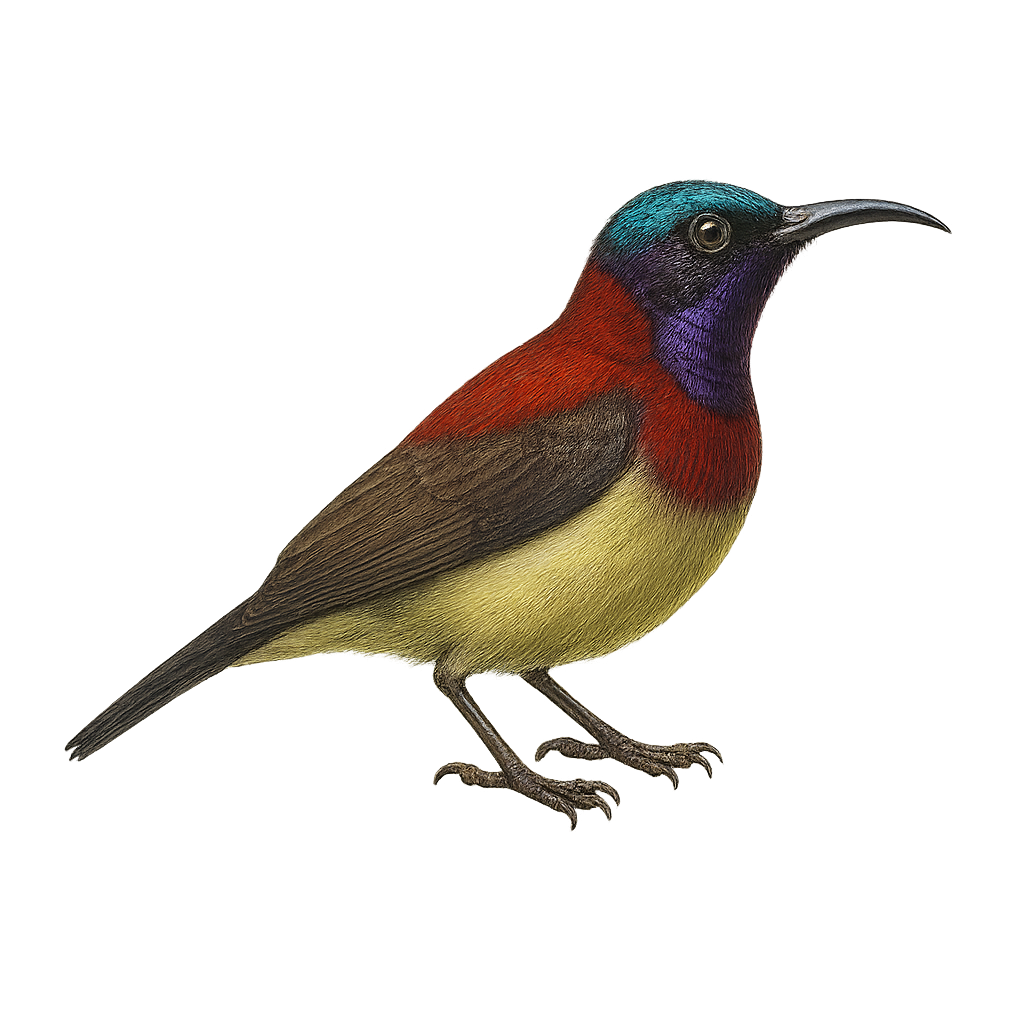Your wildlife photography guide.
Explore the crimson sunbird in detail, study its behavior, prepare your shots.
Where to observe and photograph the crimson sunbird in the wild
Learn where and when to spot the crimson sunbird in the wild, how to identify the species based on distinctive features, and what natural environments it inhabits. The WildlifePhotographer app offers tailored photography tips that reflect the crimson sunbird’s behavior, helping you capture better wildlife images. Explore the full species profile for key information including description, habitat, active periods, and approach techniques.
Crimson Sunbird
Scientific name: Leptocoma minima

IUCN Status: Least Concern
Family: NECTARINIIDAE
Group: Birds
Sensitivity to human approach: Suspicious
Minimum approach distance: 5 m
Courtship display: February to April
Incubation: 15-17 jours
Hatchings: February to May
Habitat:
tropical forests, subtropical forests, shrublands, gardens
Activity period :
Primarily active during the day, with peak activity in the morning and late afternoon.
Identification and description:
The Crimson Sunbird, Leptocoma minima, is a small, vibrantly colored bird belonging to the Nectariniidae family. It is primarily found in tropical and subtropical moist forests, as well as in shrublands and gardens. This bird is distinguished by its striking plumage, featuring metallic shades of red, green, and blue. Males often display brighter colors than females, who are generally duller. The Crimson Sunbird primarily feeds on nectar but also consumes insects to supplement its diet. It plays a crucial role in pollinating flowers, thus contributing to the biodiversity of its habitat.
Recommended lens:
400 mm – adjust based on distance, desired framing (portrait or habitat), and approach conditions.
Photography tips:
To photograph the Crimson Sunbird, it is advisable to use a 400mm lens or greater to capture precise details without disturbing the bird. Look for areas where flowers are abundant, as these birds are often attracted to nectar sources. Be patient and discreet, as they can be suspicious. Use a tripod to stabilize your camera and wait for the bird to perch for sharp shots. The natural light of the morning or afternoon is ideal for highlighting the vibrant colors of their plumage.
The WildlifePhotographer App is coming soon!
Be the first to explore the best nature spots, track rutting seasons, log your observations, and observe more wildlife.
Already 1 430 wildlife lovers subscribed worldwide

